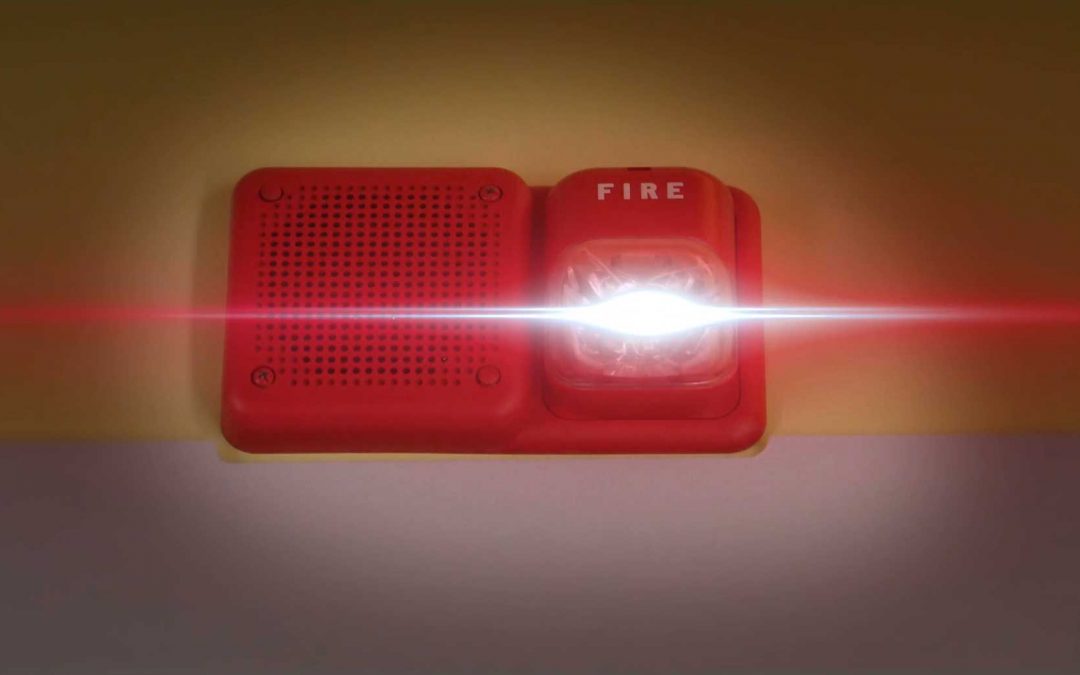Business security systems protect employees, assets and customers. But false alarms can result in unwanted fees and fines.
According to a report from London Fire Brigade, False alarms account for around 40,000 call outs every year, making up a third of all incidents for fire crews in London alone.
To cut back on false alarms and the cost associated with responses, alarm companies implement false alarm protocols. These are a set of procedures that monitoring centres go through to ensure the validity of a threat. Below, we explain the protocols for the alarms we install and how your business can benefit from them.
Burglar Alarms
If a burglar alarm is tripped or an emergency signal is sent from your business, the Monitoring Center will place a call to the primary telephone number provided by the customer. If the person answering the Monitoring Center’s call provides the correct passcode, then no further action is taken. However, if the correct passcode cannot be provided, the enhanced verification contact will be called. If that contact is unable to verify the alarm is false, the Monitoring Center will notify the police and an emergency contact.
Panic Alarms
Some businesses have panic buttons installed for employees to press should they experience a dangerous situation, such as a robbery.
When a panic alarm is signalled, the Monitoring Center will contact the police. After 30 minutes, a Monitoring Center operator will call the telephone number provided by the customer, or an emergency contact will be notified.
Fire Alarms and Carbon Monoxide Detectors
In compliance with the National Fire Protection Association (NFPA) requirements, the fire department will be notified upon receipt of the fire alarm signal or if carbon monoxide detectors go off inside your business.
The Monitoring Center will call the phone number provided for your business and ask for the correct passcode. If the person answering provides the correct passcode, the fire department will be notified and they may or may not choose to cancel the response. But if nobody answers the call from the Monitoring Center, there is a busy signal, no passcode, or an incorrect passcode, an emergency contact will be called.
For carbon monoxide alarms, the customer is instructed to leave the premises even if they have the current code, and the fire department is notified to check the premises.
How to Avoid False Alarms
We understand false alarms happen, but there are ways to help reduce the risk. Below are some tips to prevent the police from being dispatched to a business unnecessarily:
- Give everyone who will be using the alarm system, a code to arm and disarm the alarm panel.
- Tell everyone who will be using the alarm system the verbal passcode to give to your central station representatives if they call.
- Properly educate everyone who will be using the system on how to use it correctly.
- If an alarm is triggered accidentally, the central station will attempt to call the number on file. Have your passcode easily accessible to provide to your central station representative to verify that the alarm was false.
- Educate everyone who will be using the alarm system about electronic verification and how it works.
- If using an entrance/exit delay to give you extra time while activating/deactivating your alarm, ensure the delay is long enough for everyone who will be using the system.
- Test and maintain your alarm system on a regular basis.
If you have questions about false alarm protocols or are looking to get an alarm system installed into your business premises, give us a call on 02393 100 260 to find out more.

